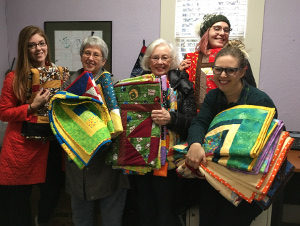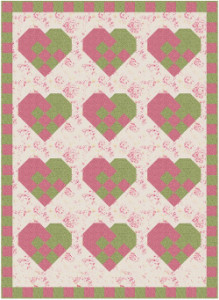A message from a former student
 CCQ has been teaching quilting classes at the Coffee Creek Correctional Facility since 2002. Here’s a message we recently received from a student in our very first class:
CCQ has been teaching quilting classes at the Coffee Creek Correctional Facility since 2002. Here’s a message we recently received from a student in our very first class:
“I was sitting at my table this evening, finishing a quilt, and I thought of the first quilt I ever made. I learned to quilt in the very first cccf quilting class! I think my instructor’s name was Marge….but after this long, I can’t remember.
I wanted to email and thank the women who generously donate their time to this program. Quilting has been an outlet for me over these last 17 years and helped me through tough times.
Many times, those who work in corrections never hear the success stories, sometimes they are very few and far between. I released in 2003 and I started college. I now have my masters degree in education and work as a teacher at deer ridge correctional institution.
Thank you for being a part of my journey and for giving of yourselves to people who many have given up on. I feel blessed for having been a part of your program.”
Angie


 Just in time for the holidays, CCQ members delivered 23 quilts to Kinship House, a Portland nonprofit that provides mental health services to kids in foster care. The Kinship House mission is to help minimize transitions and increase the chances of children settling into a stable, healthy, and permanent home. You can learn more about Kinship House on
Just in time for the holidays, CCQ members delivered 23 quilts to Kinship House, a Portland nonprofit that provides mental health services to kids in foster care. The Kinship House mission is to help minimize transitions and increase the chances of children settling into a stable, healthy, and permanent home. You can learn more about Kinship House on  Instructors in CCQ’s four classes meet regularly to share ideas about teaching in our prison quilting program. We also use email to communicate with each other. A recent email exchange focused on our goals for teaching.
Instructors in CCQ’s four classes meet regularly to share ideas about teaching in our prison quilting program. We also use email to communicate with each other. A recent email exchange focused on our goals for teaching.